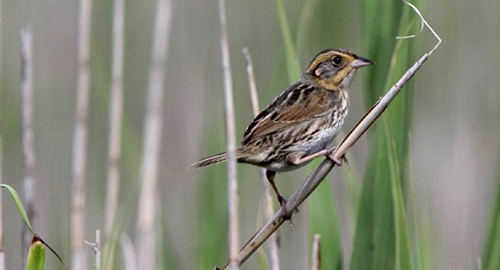At 5000 acres, the Hampton-Seabrook Estuary contains the largest amount of salt marsh in the state. These marshes, along with their associated tidal flats, provide critical habitat for breeding and migratory birds, particularly shorebirds and salt marsh sparrows. Between 2006 and 2007, NH Audubon undertook a comprehensive avian assessment of this estuary, with the goals of obtaining information on the distribution of breeding birds and seasonal patterns of use by migrating shorebirds. The results were published in “Avian Use of the Hampton-Seabrook Estuary.”, and documented the estuary’s importance to these two groups of birds.
Following this study, NH Audubon also produced a brochure that summarized the findings of this study and presented conservation priorities for the estuary. This brochure has been made available to stakeholder groups in the region, including Conservation Commissions, recreation facilities, and interested individuals.
Moving forward, conservation of salt marsh birds is a clear priority in light of potential sea level rise induced by climate change. NH Audubon is working with partners at UNH and the University of Maine to conduct surveys for sparrows and other breeding birds as part of a larger regional project. Data from our 2006-07 project will shortly be incorporated into a scientific paper on the effects of salt marsh ditching.
Project Leader: Pam Hunt
- ConservationOur work in conservation science:Bald EaglePeregrine FalconNorthern HarrierCommon NighthawkSwallows, Martins and SwiftsWhip-poor-willsGrassland BirdsRusty Blackbird ResearchAmerican PipitsCoastal ShorebirdsThe State of the BirdsMotusFarrar Farm Wildlife Crossing ProjectDragonflies and DamselfliesPollinatorsPhenological Monitoring ProjectRaptor MigrationConsultingPublications & Past Projects
Explore our birding-specific websites:
- Education
- Policy
- Lands
- Centers and EventsCentersEvents
- About Us

